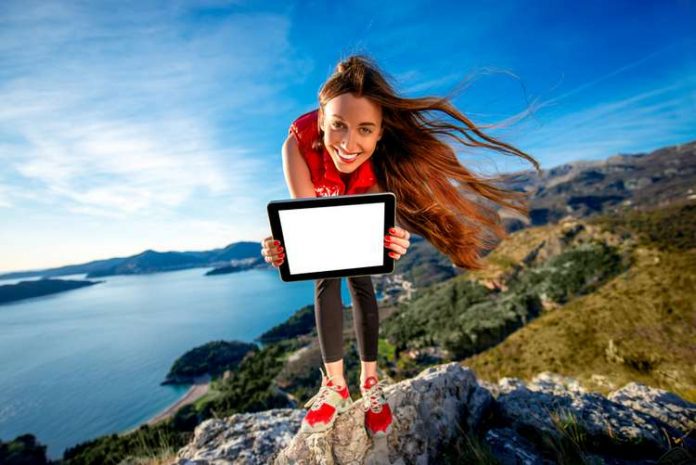Going somewhere on holiday or on a day trip is an exciting yet often daunting experience. In the past, navigating your way around a new city, a museum, or just getting more information about an event wasn’t always easy and required asking several locals or staff to get to your destination and make the most of your trip. Fast forward to today, and thanks to the increasingly advanced mobile technology, it has never been easier to get the info you need whenever and wherever you go.
Digital tourism is the term used to describe the application of technology by tourism operators to enhance the experience of tourists and event goers. Digital tourism is meant to fill in the gaps where common challenges felt by operators are not easily solved by traditional methods and extra staffing. Almost everyone in the world today owns a smartphone and knows how to use the internet and apps to find information, be entertained and interact with others. That’s why it makes sense for decision-makers in the tourism sector to dedicate more resources to digital tourism.
Table of Contents
Get Around Quickly and Easily
We’ve all seen the massive array of booklets and leaflets located at the airports and train stations of major tourist destinations. There are so many maps and attractions to visit that it can be daunting to try and figure out not only where to go to make the most of your time but also exactly how you are going to get there. Sometimes taking a taxi is expensive and the language may be a potential barrier. For this reason, a mobile application developed and released by the city can contain all the information a tourist needs.
One of the main features of such a smartphone app can be to help tourists get around. Similar to a map application, this app would show tourists how to get from where they are to where they want to go on foot, in the car or via public transport. If they decide to go by public transport then the app can include the ability to load money into the app, which the tourist can then use as currency on buses, trams, trains, and taxis.
By working out the user’s location, the app can also suggest various attractions in that vicinity that they can walk along with reviews left by previous visitors. Local businesses can advertise through the app, giving the tourist operator extra income to develop more tourist infrastructure and enhance the tourist experience. Meanwhile, visitor reviews will provide some welcome suggestions for improving local attractions as well as give new visitors an overview of what to expect when they get there including ticket costs, line lengths, food prices and how to get the most of their time and what to avoid.
Save Time and Money
There’s nothing worse than getting to your destination and staring in disbelief at the length of the queue waiting to buy entrance tickets. Imagine touring the castles of Scotland and after arriving at the infamous Edinburgh Castle and then having to wait over an hour to buy tickets. Well, the digital tourist could go to the castle’s official website and buy tickets from their mobile in a matter of a few clicks. At the gate, they simply have to hold their mobile phone up to a receiver and it allows entry through an electronic gate. Tourists no longer have to worry about carrying tickets, which have the potential to be lost.
Similarly, by buying online and using the gate system, the castle operators are able to provide significant discounts by not paying for staffing costs as well as ticket paper and printer ink. Any revenue lost from the discounts is further offset by the increased number of digital tourists the castle is able to welcome on a daily basis. Other attractions can partner with the castle to offer mobile users additional services and discounts such as free shuttle buses to their establishment and discounted meals and drinks.
Be Entertained
One of the major uses and gratifications of using mobile devices is to be entertained. Even being in a new and exciting destination doesn’t stop tourists from checking their phones and tablets. People love to play games, watch videos and listen to music. For this reason, a popular tourist destination or major event can enhance the experience for visitors by creating and offering additional entertainment features.
Museums and art galleries can allow visitors to take pictures of the exhibitions through a dedicated app, which then brings up a short engaging video of the exhibits history, artist and other interesting facts not commonly known. On the other hand, by incorporating one of the most popular fads in recent times, allow digital tourists to take selfies with exhibits, which are instantly enhanced to bring the person and exhibit together in fun and unique ways.
Personalized to Suit Your Needs and Likes
Digital tourism is becoming so advanced that it can personalize the results according to exactly what you are looking for and based on the things you like. Imagine searching for shopping options near your city hotel and the hotel’s own official website returns a list of stores and shopping malls that sell items you have browsed on your phone. This may seem like an invasion of privacy but is already being utilized by advertisers to make sure you see targeted ads that you are most likely to look at and click on.
Another example could be scanning QR codes on music posters while at a music festival. The codes you will likely scan are placed on the posters of artists you actually like and can give you more information about upcoming events, autograph opportunities, competitions to win prizes or meet the artist, and other news and information. This protects your device from the way advertisers use your personal information since users decide which code to scan.
Taking full advantage of the capabilities of modern mobile technology, digital tourism looks set to be the solution to taking a good visitor experience and making it unforgettable.




